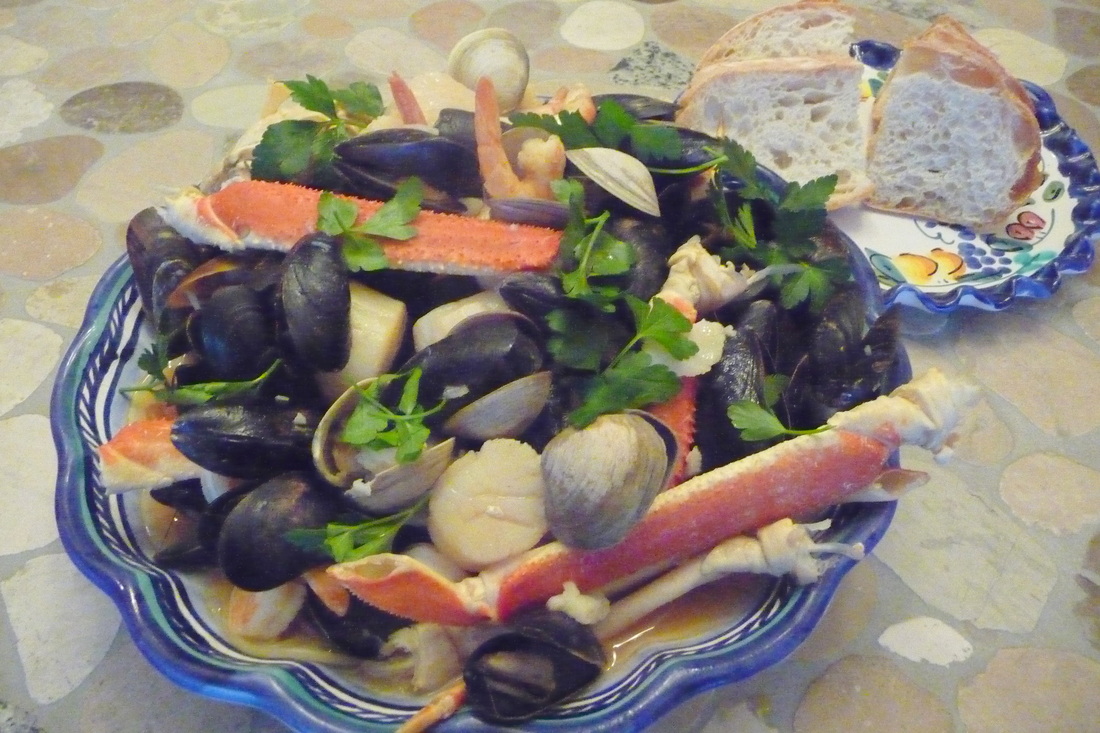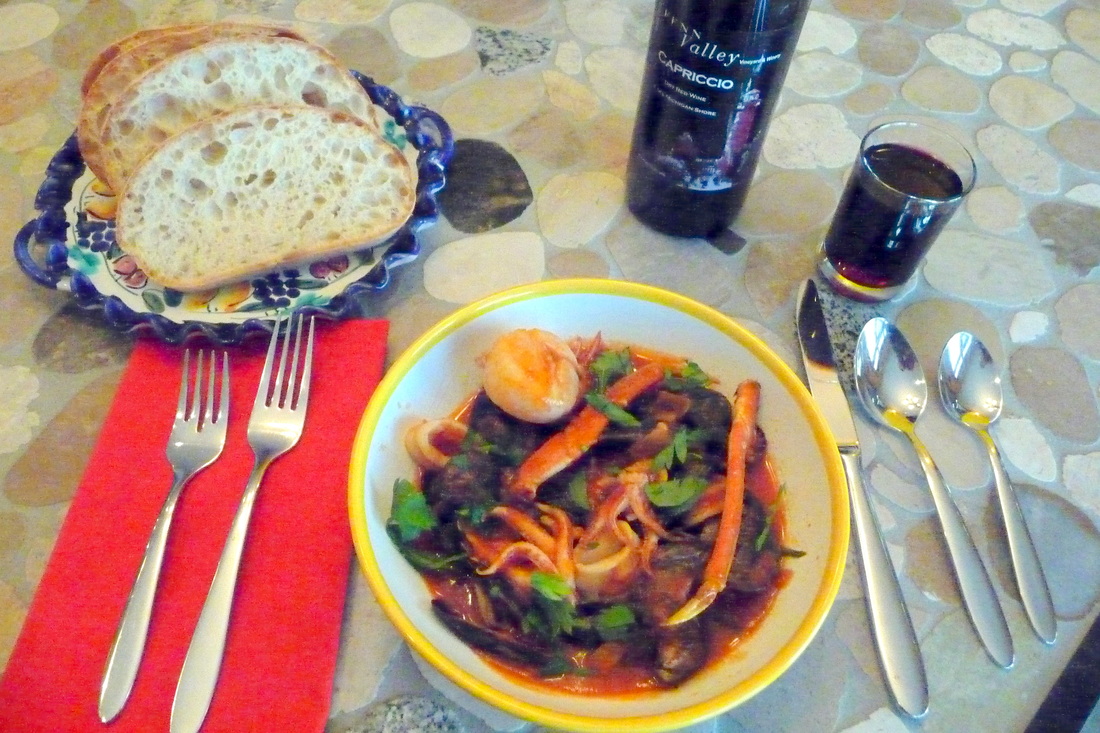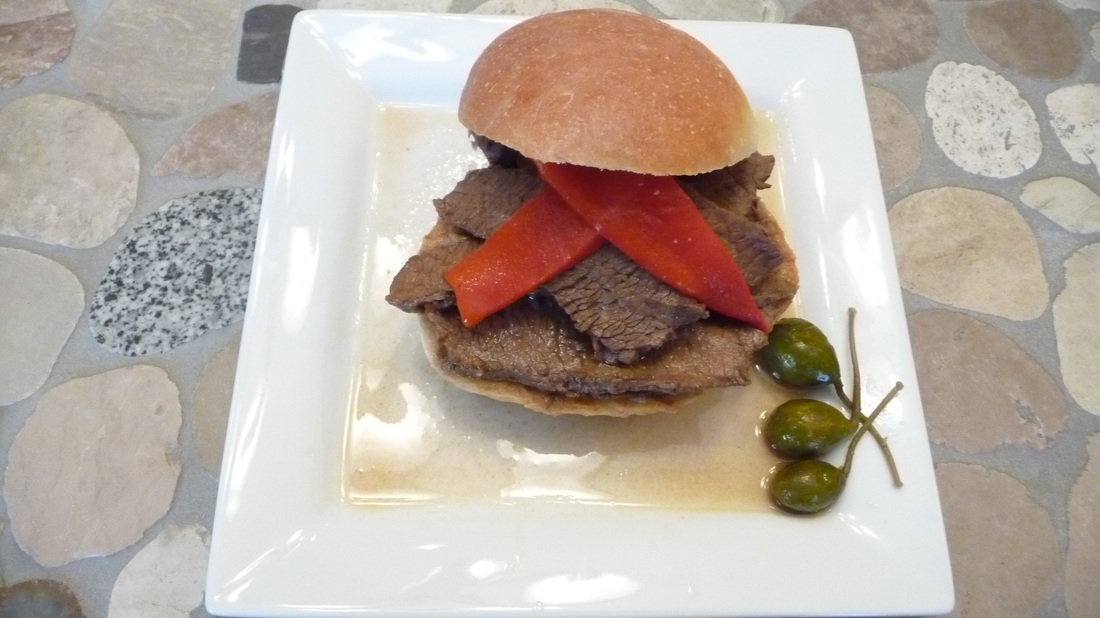| Zuppa di Mare – literally soup of the sea – is one of my favorite ways to enjoy seafood. It is one of those dishes that has no particular recipe. It is more of a concept or idea – a preparation technique – and it is certainly not unique to Italy. Anywhere in the world where there are people living near the sea there are people cooking the day’s catch in boiling water flavored with aromatic vegetables, herbs, spices, and frequently some local wine. Italy has over 4,700 miles of saltwater coastline, and being a peninsula, most of the population lives near the sea. With a wide variety of seafood available to just about everyone, and as we’ve come to expect, each Italian family typically has its own traditions for preparing it. They also have a wide variety of names for what I prefer to call Zuppa di Mare. Some Italians prefer Zuppa di Pesce (fish soup). In Tuscany fish soup is called Cacciucco; in Abruzzo it’s Brodetto di Pesce; and in Lecce (the “Heel of Italy”) it’s known as Quatàra di Porto Cesareo. Not to be outdone, the Catalan-speaking regions of Spain have a fish soup called Suquet Dew Peix, and in the Provence region of France it is famously known as Bouillabaisse. The list goes on and on! Years ago I discovered an Italian-American version of fish soup in San Francisco called Cioppino. Cioppino dates back to the 1880s when Genoese fisherman began immigrating to the North Beach area of the city. The word cioppino comes from the Italian word ciuppin, meaning “to chop”, or “chopped”. It is a common word in the Ligurian Region of Italy which includes Genoa, where leftovers from the day’s catch were chopped and cooked in a tomato and wine broth. While Cioppino has become an iconic food in San Francisco, it is virtually unknown by that name anywhere else in the U.S. | FEATURED RECIPES Cioppino Zuppa di Mare Zuppa di Mare. Cioppino with crusty freshly baked ciabatta and a glass of Cappriccio, a favorite Michigan wine from Fenn Valley Vineyards. |
Unfortunately, there are no Italian seafood soup traditions in my family. If my grandparents ever had such traditions, they were lost or forgotten when they immigrated to the United States and chose to live inland where seafood was neither readily available nor affordable. So many years ago I decided to “create” recipes for both types of Italian fish soup. This was well before the days of the Internet, which would have made my challenge much easier, but must less enjoyable. I (not-so-cleverly) call them Zuppa di Mare and Cioppino!
My approach with the Zuppa di Mare is to first prepare an Italian Fish Stock using fish bones, heads, shells and a selection of aromatic vegetables. After cooking and straining, the stock is used to cook a selection of firm-flesh fish and shellfish. It can be served as a soup (or stew), or it can be served over pasta (preferably linguine). I should note that I “learned” this two-step preparation technique from Julia Child. When preparing her version of Bouillabaisse, she first prepared what she called Poisson di Pesce.
I created my version of Cioppino by using my grandmother’s Tuna Fish and Anchovy Sauce as a base, but without the tuna fish. I added some chopped onion, wine, and red pepper flakes. I called this Spicy Marinara Sauce. I’ve written about both sauces before. I use the marinara sauce frequently with just mussels. I also use it as the base for my Cioppino – which, after all, simply involves adding more seafood and shellfish. Any combination of shrimp, crab, scallops, mussels, clams, calamari, and firm flesh fish work every time!
I should also note that preparing the Zuppa di Mare is somewhat time consuming. It is worth the effort, but making it is clearly not a one-day affair. The Cioppino, however, can be ready in well under an hour, and is equally delicious. I hope you will discover one or both sometime soon.
Buon appetitio.
P.S. I recently examined several online recipes for Cioppino – especially those originating in San Francisco. I have even prepared a few. Admitting great bias, I prefer my version!



 RSS Feed
RSS Feed